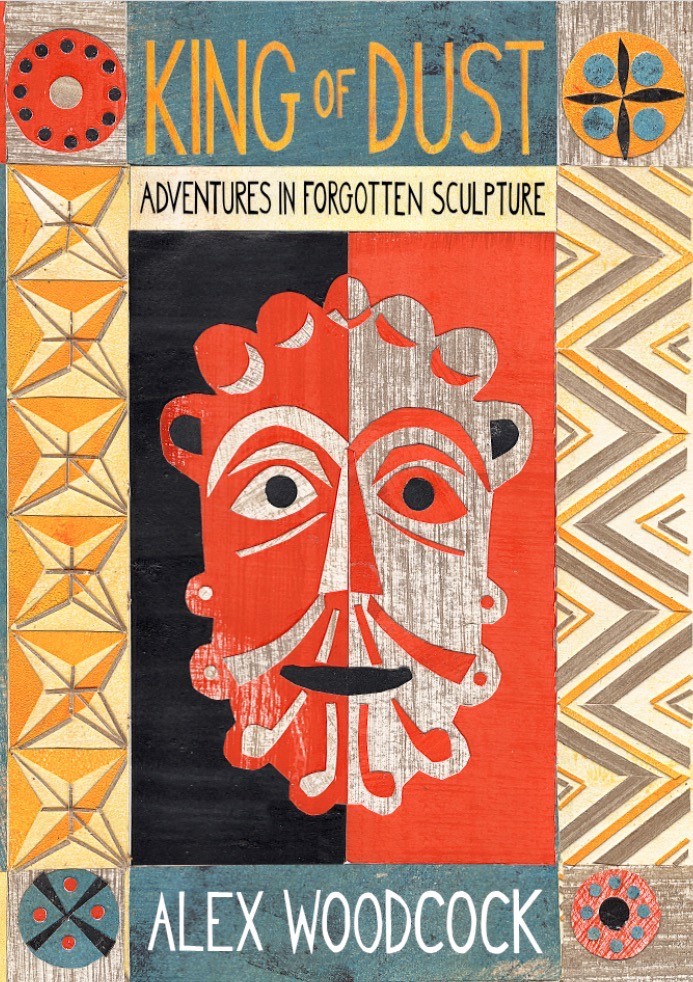Alex Woodcock’s King of Dust, recently published by Little Toller, is a craftsman’s journey through the landscapes and ancient sculpture that inspired him to pick up his stonemasonry tools. Mathew Clayton reviews.

Feeling lost at the end of three years studying medieval sculpture for a PHD, Alex Woodcock decided to take his first tentative steps carving stone – bringing to life what he had been studying. An afternoon workshop in a Dorset garden eventually led to a qualification as a stonemason and then a job at Exeter Cathedral. A few years later Alex once again felt unsettled, so he moved to Cornwall and embarked upon a year-long series of trips to visit the village churches of the county. It is this journey that forms the core of King of Dust.
No journey should be undertaken without an accompanying guide book – ideally idiosyncratic and out-of-date. Alex’s choice Norman Architecture in Cornwall, published in 1909, fits this bill perfectly. The author Edmund Harold Sedding (1863-1921) was an architect who mixed descriptions of nature with descriptions of buildings, a style also adopted by Woodcock. And like Sedding, Woodock’s interest is specific to the Norman period – the 11thand 12thcenturies, known as Romanesque…
‘Romanesque architecture is defined by several things: round arches, solid masonry walls, small windows, bulky column. It is an architecture of mass and darkness, quite unlike the subsequent Gothic style, whose characteristic pointed arches directed weight more efficiently, allowing larger windows, and, as a result, more light filled interiors. Romanesque sculpture is primarily architectural sculpture, meaning it is carved on architectural components of buildings. Ornament is generally found around doorways and windows. And what ornament it is. Detractors note the ‘primitive’ tenor of the images, characterised by bold geometric patterns, fantastical creatures and humans in states of rapture or distress, the same chord to which enthusiasts are drawn.’
Or to put it simply, lots of zig zag patterns and fantastical beasts – human heads on animal bodies. The most arresting of these designs is the beakhead. Large eyes, long beak and little else. A very disturbing image. In a later century we find the beakhead occurring on the masks worn by plague doctors in the Black Death. In a chapter devoted to beakheads, Woodcock returns to the idea of what is decreed to be primitive taking issue with its traditional associations…
‘Primitive is generally defined in negative terms, lacking in refinement or technological accomplishment, suggesting something, less complex or less advanced than something else. Just as the thoughtful forms of the Romanian sculptor Constantin Brancusi (1876-1957) were often derided as primitive, so Romanesque sculpture – which shares much with modernist art – can be easily be overlooked. But from my own experience carving stone I know that mistakes are easier to hide in highly decorative and ornamental work than among straight lines, simple curves and flat surfaces, In fact, you could say that ‘primitive’ is actually quite difficult to practice – to achieve a balance between sense of life in the work and the technical skill of producing the work in the first place isn’t straight forward.’
I would add one thought: when ornament is stripped away what shines through in any work of art is the quality of the imagination and ideas behind it. And Romanesque sculpture, it appears to me after reading this fantastic book, is wildly imaginative.
Woodcock’s book follows a traditional path – the author embarking on a journey to cure their soul. What makes it so wonderful is the originality of the subject matter and the clarity and honesty with which he approaches it. I defy anyone to read this book without also thinking, at least once, why on earth aren’t I living in Cornwall.
*
King of Dust: Adventures in Forgotten Sculpture is out now and available here, priced £16.00.